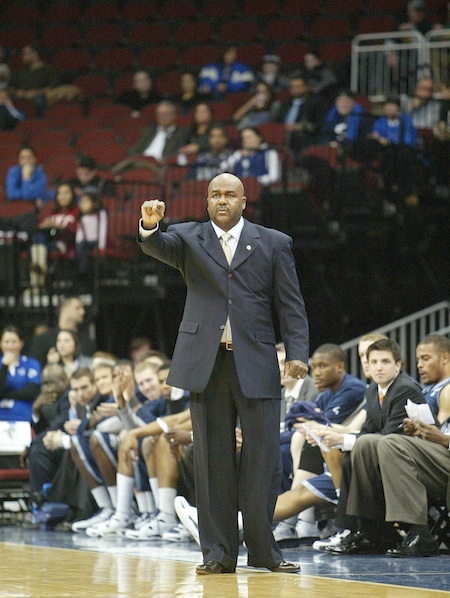 |
| Picture from here. |
After a defensive battle in the first half, the Hoyas broke the game open early in the second half only to watch the Louisville Cardinals crawl back in, and then take a lead of their own.
But Georgetown was not to be denied tonight, thanks to a Herculean effort by Chris Wright and a clutch 3FG by Hollis Thompson.
The Hoyas pulled it out in the end, 62-59.
Full Recap by Alan to follow.
Let's run the numbers:
TEMPO-FREE BOX SCORE . Home Visitor . Georgetown Louisville . 1st Half 2nd Half Total 1st Half 2nd Half Total Pace 33 31 64 Points 22 40 62 18 41 59 Effic. 67.5 127.9 96.9 55.3 131.1 92.2 eFG% 34.5 82.4 52.2 29.6 53.3 42.1 TO% 24.6 25.6 25.0 33.8 16.0 25.0 OR% 30.0 16.7 26.9 31.6 50.0 40.0 FTA/FGA 13.8 88.2 41.3 11.1 36.7 24.6 Assist Rate 55.6 46.2 50.0 42.9 76.9 65.0 Block Rate 21.1 6.7 14.7 10.5 7.1 9.1 Steal Rate 18.4 9.6 14.1 12.3 12.8 12.5 2FG% 36.8 78.6 54.5 26.3 46.7 35.3 3FG% 20.0 66.7 30.8 25.0 40.0 34.8 FT% 50.0 80.0 73.7 66.7 81.8 78.6
The first half featured some excellent defense. On Louisville's end, they came out in a matchup zone that seemed to confound the Hoyas. Faced with this indeterminate defense that seemed to switch to man at times, the Hoyas became tentative and spent much of their offensive sets passing the ball around the perimeter before jacking up an ill-advised shot. Add in the usual smattering of sloppy turnovers, questionable offensive foul calls and some missed lay-ins and you can see how Georgetown ended up with only 22 points.
On the other side, though, Georgetown was fantastic in the first half. The guards stayed in front of Peyton Siva, who has been unstoppable of late. They were also extremely active in forcing turnovers -- there were a lot of slapped balls. The result was only 18 points for Louisville.
The second half was completely different. Both teams made adjustments; both teams began to shoot a bit better. On the Louisville side, either Pitino saw a weakness in the corner of the defense or the Hoyas got a bit tired. Either way, Louisville came back due to a series of threes, mostly from the corner. They also crashed the boards with impunity.
Georgetown began to jump-start its offense at the end of the first half, and it did it primarily in two ways. One, by getting Chris Wright out on the break, where he repeatedly creating easy points when nothing else was becoming easy. And secondly, by getting the ball into Julian Vaughn. Toss in the free throws down the stretch, and that's enough to overcome a bad set of turnovers at the end. Again.
Interestingly, Georgetown's good defense in the last couple of games has been by forcing jump shots instead of allowing lay-ins. This game, they did force jump shots, but the Hoyas allowed many more close shots than they had in previous games. Much of this seems due to the strong offensive rebounding by Louisville.
Where Louisville may have lost the game is that they couldn't make those close in shots, shooting only 8-16. Georgetown shot 13-19 in similar shots.








